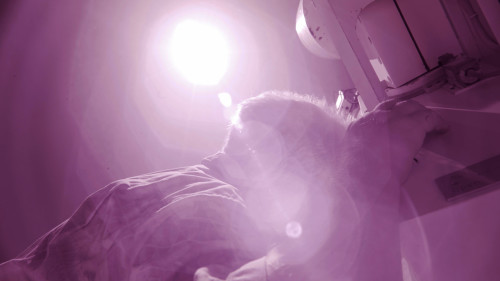 When will the next large solar storm impact the earth? In this documentary produced for Terra Mater Factual Studios, director Manfred Christ gets up close and personal with the only star in our immediate vicinity. He examines the largest solar storm in history, which shook the earth in 1859, and presents both the earliest days of solar research and today’s high-tech approaches.
When will the next large solar storm impact the earth? In this documentary produced for Terra Mater Factual Studios, director Manfred Christ gets up close and personal with the only star in our immediate vicinity. He examines the largest solar storm in history, which shook the earth in 1859, and presents both the earliest days of solar research and today’s high-tech approaches.
The film features truly incredible images captured by the newest generation of space probes, as well as a visit to Europe’s largest solar telescope in Tenerife and to the facility which is producing the probe that will draw nearer to the sun than ever before. The journey continues to the world headquarters of the sunspot observers in Brussels and the Kanzelhöhe Observatory in Carinthia, one of the birthplaces of modern solar research. The astronomer Stuart Clark provides insights into the history of solar research, while the mathematician Valentina Zharkova predicts that solar activity will fall by 60 percent in the coming decades. The veracity of this claim and the impact that such a reduction may potentially have on the earth’s climate is the subject of animated debate. Camera: Mike Fried, Editor: Jörg Achatz, Music: Roman Kariolou
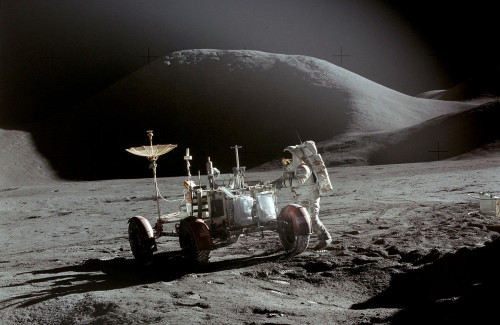 The German-language version of our film about the moon premiered on the 13. December 2017 as part of Servus TV’s “Terra Mater” documentary series. “The Moon – Our Gateway to the Universe” tells the story of lunar exploration and examines the fascinating discoveries made in recent years.
The German-language version of our film about the moon premiered on the 13. December 2017 as part of Servus TV’s “Terra Mater” documentary series. “The Moon – Our Gateway to the Universe” tells the story of lunar exploration and examines the fascinating discoveries made in recent years.
Five internationally renowned, passionate and entertaining scientists from the U.S.A., Germany, France and Russia provide a running commentary of events from the first probe to successfully land on the surface to the incredible discovery that there is actually water on the moon.
In southern Spain, an aerospace engineer demonstrates that it is possible to produce oxygen from lunar rock using solar power. This could, potentially, provide a sustainable source of air for astronauts in future.
The space travellers could find shelter in newly-discovered cave systems, ancient remnants of a time when the moon experienced volcanic activity. The moon will undoubtedly be the launch pad for future space exploration.
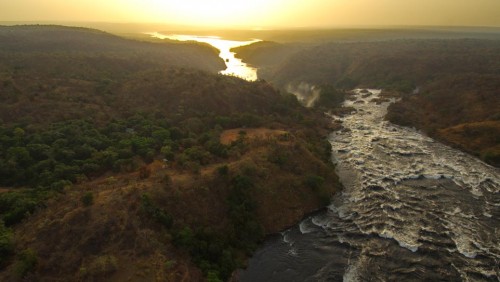 Episode 1: Mountains of the Moon
Episode 1: Mountains of the Moon
Episode 2: Wild Waters
Episode 3: Lifeline in the Desert
Two qualities define the Nile as the ultimate river. First, it is the world’s longest river. From the source in Rwanda to the end at the Mediterranean Sea, it travels 4130 miles. Second, the Nile is a truly cosmopolitan water. Its source lies in tropical Africa, its most important tributary – the Blue Nile – originates in the Ethiopian highlands. Its longest stage – through Sudan and Egypt – is characterised by Arab influences. Travelling through a sea of sand, this river gives life. It passes Africa’s largest city – Cairo – and ends only a few hundred kilometres away from Europe, in the Mediterranean Sea.
Harald Pokieser and his international team worked on this monumental three-part documentary for two-and-a-half years. The films explore the wilderness along the river’s banks, but also venture into remote regions to reveal their natural treasures in a way never seen before: the source of the Nile in 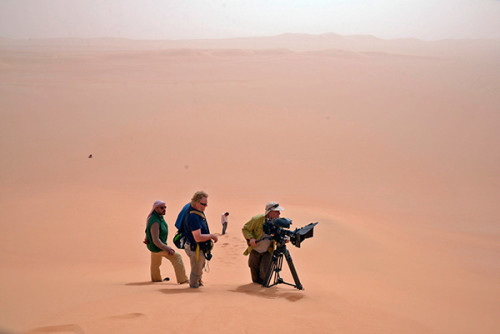 the Rwenzori Mountains, the inaccessible swamps of Sudan, the drainage basin of the Blue Nile in the Ethiopian highlands and the dramatic deserts of Egypt.
the Rwenzori Mountains, the inaccessible swamps of Sudan, the drainage basin of the Blue Nile in the Ethiopian highlands and the dramatic deserts of Egypt.
During filming, Pokieser and his team only narrowly escaped a devastating forest fire, were detained by heavily-armed soldiers and worked in extremely unhygienic conditions in scorching temperatures.
Written and directed by Harald Pokieser. Edited by Jörg Achatz. Music composed and arranged by Andy Baum. A Terra Mater Factual Studios/Cosmos Factory production in co-production with National Geographic Channel in association with France Télévisions and WDR.
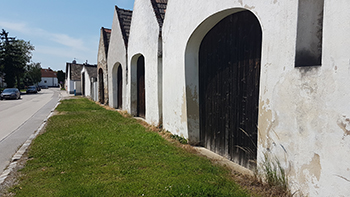
The exhibition is known as “Welterbe Neusiedler See / Fertö taj – vielfältige Kulturlandschaft zwischen Alpen und Puszta”, or “World Heritage Site Lake Neusiedl – a diverse cultivated landscape between Alps and Puszta”. The video clips for the exhibition are produced by Cosmos Factory for the Neusiedlersee-Seewinkel National Park as part of a European Union project.
The clips cover a range of subjects, from one-lane villages enclosed by old rows of barns to ancient wine cellars, from narrow plots of land as a result of inheritances to construction materials such as reeds, sandstone and loess, as well as wind parks and their impact on the landscape. Camera: Josef Neuper (2016)
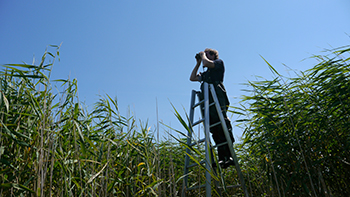
The blood-red sphere of the sun sinks beneath the horizon, and the calls of waterbirds and raptors cut through the twilight. This is the westernmost point of the Orient, Austria’s only steppe lake.
Lake Neusiedl, just two meters deep, is surrounded by an immense reed jungle – a world in miniature where humans instantly lose their orientation.
50 minutes, written and directed by Manfred Christ. A co-production by Cosmos Factory, ORF, BR in association with Burgenland Tourist Board and Nationalpark Neusiedler See.
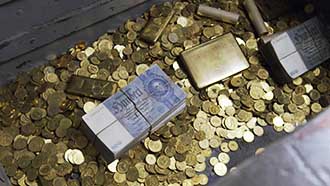 Set amidst the Austrian Alps is a deep lake that has enthralled the world for decades: Lake Toplitz.
Set amidst the Austrian Alps is a deep lake that has enthralled the world for decades: Lake Toplitz.
It is said that a massive collection of controversial, classified documents and the remains of a treasure trove can be found in its depths. Allegedly, these items were stowed away by Adolf Hitler’s most senior followers just before the end of World War II.
Back then, the mountains surrounding Lake Toplitz were known as the legendary ‘Alpine Fortress’ or ‘Alpenfestung’, a retreat area for the German armed forces and its officers.
Which aspects of this myth are true and which are not? Those who have explored the history of the lake have certainly found enough material to fill the pages of a thriller novel – including SS officers, mysterious divers, counterfeiters, adventurers seeking a fortune and the crew of a German Navy test station, who conducted secret tests with explosives and underwater rockets from 1943 to 1945.
This is the first comprehensive film about the intriguing adventures surrounding the myth-enshrouded Lake Toplitz. Written and directed by Manfred Christ for Terra Mater Factual Studios.
 Spiral clouds of steel blue and ink black, bolts of lighting stretching for miles casting a spider’s web across the sky, eerie rumblings and thunder strikes freezing one’s blood, accompanied by rain, storms and hail: Thunderstorms are light shows literally off the planet.
Spiral clouds of steel blue and ink black, bolts of lighting stretching for miles casting a spider’s web across the sky, eerie rumblings and thunder strikes freezing one’s blood, accompanied by rain, storms and hail: Thunderstorms are light shows literally off the planet.
These tremendous forces of nature are beautiful and frightening alike … and more than just heavy weather. Recent research data indicate that heavy storms and lightning in Africa are generating the notorious Atlantic hurricanes which hit the Caribbean and the US coast every summer. The bolts are even connected to climate change and obviously influence earth’s magnetic field. However, up to the present day we don’t know exactly were these lightning strikes come from and how they are created.
These topics are all part of this documentary that will focus on the current state of lightning and thunder storm research using latest digital video technology. It traces the myth of ball lightning and goes into detail of a lightning strike’s anatomy as well as provides answers to sprites – lightning bolts that explode into the depth of space. A co-production by ORF, Cosmos Factory, National Geopraphic Channel, National Geographic Channels International and ZDF.
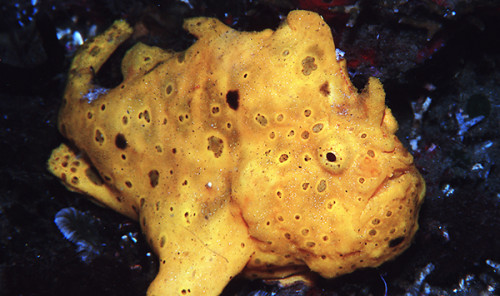 The Lembeh strait to the north of the Indonesian island of Sulawesi is a unique hotspot of marine biodiversity. Countless amazing creatures thrive in the underwater landscape around Lembeh Island.
The Lembeh strait to the north of the Indonesian island of Sulawesi is a unique hotspot of marine biodiversity. Countless amazing creatures thrive in the underwater landscape around Lembeh Island.
Over four years, a wildlife filmmaker couple spent many months in the region capturing hundreds of hours of behavior, lots of it never filmed before. Among other unique behavior they were able to shoot an Anglerfish swallowing a Lionfish – a scene resembling Godzilla gulping down Dracula!
Elegant seahorses, thumb-splitting Mantis shrimps, and deadly mini-octopuses are just some of the remarkable creatures most underwater films tend to overlook. Only the ground-breaking macro photography in this film can reveal the awe and beauty of life – in the reef of little monsters. Written an directed by Manfred Christ. Camera: Claudia and Manfred Hochleithner.
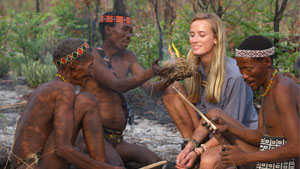 It is early morning in Namibia’s Kalahari Desert. Four bushmen, every one of them an experienced hunter, are looking for animal tracks. They are accompanied by a tall young woman: Aleksandra Ørbeck-Nilssen from Norway.
It is early morning in Namibia’s Kalahari Desert. Four bushmen, every one of them an experienced hunter, are looking for animal tracks. They are accompanied by a tall young woman: Aleksandra Ørbeck-Nilssen from Norway.
Aleksandra worked as a model in Paris and New York for many years, until she grew tired of the big cities and travelled to Namibia. Now, she moves between the two worlds, the hectic West and wild Africa.
These days, there are few hunters and collectors as skilled as the Bushmen. Their valuable knowledge of nature is in danger of vanishing – along with one of humanity’s oldest cultures. Aleksandra has therefore founded the “Barefoot Academy”, an initiative that allows experienced Bushmen to become teachers, passing on their knowledge of how to survive in the wild using simple methods and without leaving a trace to their own descendants and to students from the West.
Written and directed by Harald Pokieser for Terra Mater Factual Studios. (2015) trailer
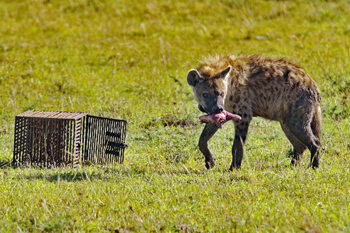 The unusual portrait of a much maligned hunter, the hyena – a dramatic story built around the competition for prey and territory and the fight for survival. The setting is Kenya’s legendary Masai Mara.
The unusual portrait of a much maligned hunter, the hyena – a dramatic story built around the competition for prey and territory and the fight for survival. The setting is Kenya’s legendary Masai Mara.
Michigan State University biologist Kay Holekamp and her team travel into hyena territory, observing from the air and the ground. Kay reveals the extraordinary intelligence of the hyenas, hunting tactically in groups, always led by females; hyenas also launch crafty solo attacks on their favourite prey, topi antelopes; and even hunt flamingos!
Lions, cheetahs and hyenas form a triangle of top predators on the savannah. They steal from, attack and harass one another and will kill each others’ young if they get the chance. Surprisingly, this film suggests that of them all, the hyena may well be «Number One», Queen of the Masai Mara.
50 minutes, written and directed by Harald Pokieser. A co-production by ORF, Cosmos Factory and Fremantle Media.
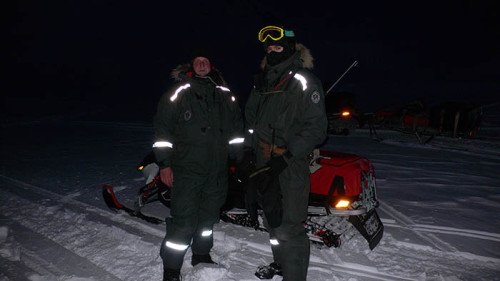
Humans prefer moderation – neither too hot nor too cold, neither too light nor too dark. But Earth doesn’t cater to our preferences. Our planet offers an abundance of extreme conditions, and people everywhere have had to learn to adapt to their surroundings.
«Extreme! – Light and Dark» is a journey to the brightest and darkest inhabited areas of the world: places where a cloud hardly ever crosses the sky – or months pass without a single ray of sunlight reaching the ground. How does so much light, or so little, affect the mindset and emotional well-being of the people who live with it? How do they protect themselves? And how do they take advantage of their situation?
Directing and camera: Udo Maurer, written by Manfred Christ. Commissioned by ORF.
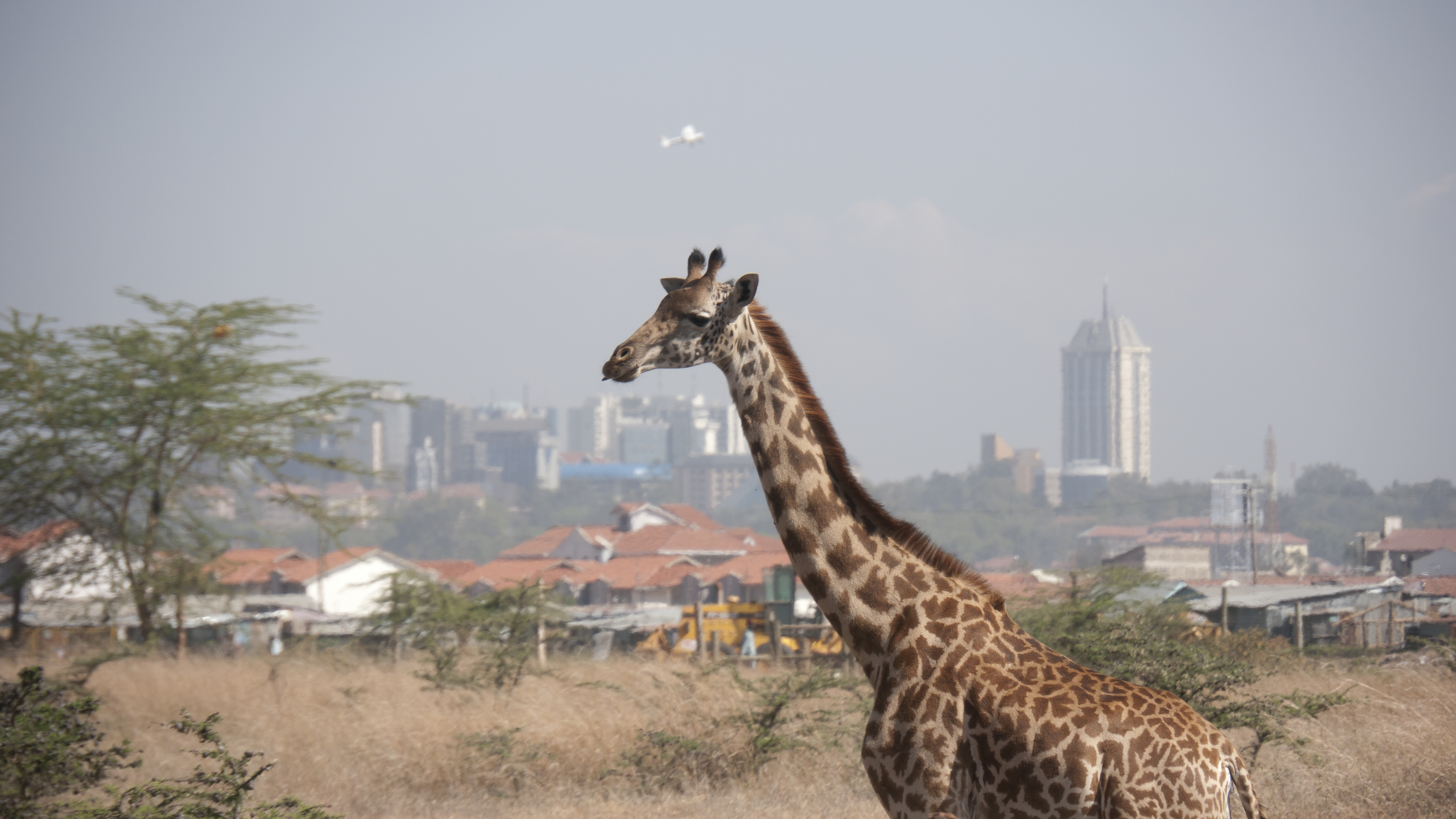 With a population of around 3 million, Nairobi is one of the largest cities in Africa. However the metropolis is surrounded by wilderness which extends into the city itself. Just a few metres from the airport lies the Nairobi National Park, with its vast savannah and mysterious inhabitants. Beside the motorway, lions, hyenas, giraffes and rhinoceros wander through grassland, separated only by a wire fence, while in the city centre hundreds of marabous breed in the tree lined streets. Hordes of apes terrorise people walking in the city’s parks.
With a population of around 3 million, Nairobi is one of the largest cities in Africa. However the metropolis is surrounded by wilderness which extends into the city itself. Just a few metres from the airport lies the Nairobi National Park, with its vast savannah and mysterious inhabitants. Beside the motorway, lions, hyenas, giraffes and rhinoceros wander through grassland, separated only by a wire fence, while in the city centre hundreds of marabous breed in the tree lined streets. Hordes of apes terrorise people walking in the city’s parks.
This is a journey of discovery through a city full of contradictions and teeming with nature, technology and wildness, in which humans and animals live together as – sometimes unwilling – neighbours. 50 Minutes, written and directed by Udo Maurer and Manfred Christ. Cosmos Factory for ORF and FreMantle Media in association with ORF Enterprise.
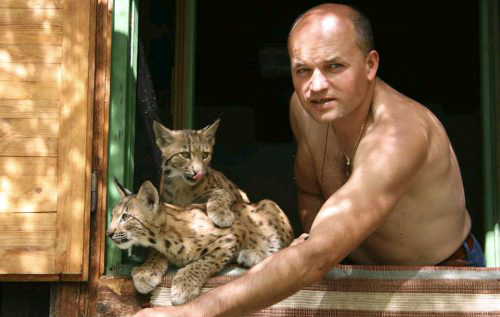 With large tufted ears, a short tail and a trusting look, one could almost believe that lynxes are just big cats. In their hearts, however, they are wild and untamed. They are the tigers of Europe. This is the story of a hard earned friendship. On the one side is Milos Majda, a quiet, nature loving ranger at the Mala Fatra National Park in Slovakia. On the other side are two small lynxes, fresh from the zoo. With Milos’ help, it’s hoped the lynxes will return to the home of their ancestors in the forests of Mala Fatra in the heart of Slovakia.
With large tufted ears, a short tail and a trusting look, one could almost believe that lynxes are just big cats. In their hearts, however, they are wild and untamed. They are the tigers of Europe. This is the story of a hard earned friendship. On the one side is Milos Majda, a quiet, nature loving ranger at the Mala Fatra National Park in Slovakia. On the other side are two small lynxes, fresh from the zoo. With Milos’ help, it’s hoped the lynxes will return to the home of their ancestors in the forests of Mala Fatra in the heart of Slovakia.
For two years Milos Majda and wildlife filmmaker Tomas Hulik followed the journey of the lynx siblings from their warm nursery inside a cabin into the wilderness.
A co-production of Cosmos Factory, ORF, NDR, STV (Slovakia) in association with Vienna Film Fund, Austrian Television Fund.
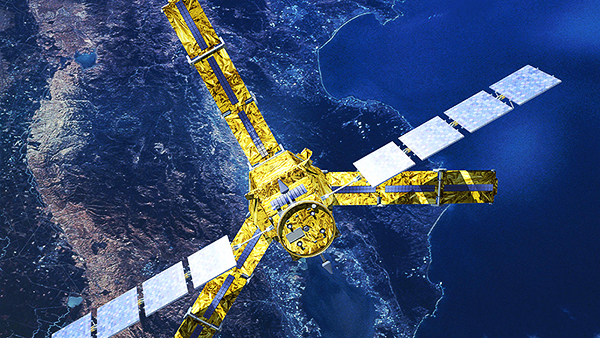 Life on earth captured through satellite technology – a unique picture from space that offers an extraordinary and different view of our planet. Our space detectives create precise satellite pictures and spot potential problems. Floods and fires can be tracked daily and movements of ocean currents and snow cover can be followed throughout the season. “Big Picture” opens the skies to let us peak as an outsider into a palette of discoveries on earth. (2010, written and directed by Paul Reddish)
Life on earth captured through satellite technology – a unique picture from space that offers an extraordinary and different view of our planet. Our space detectives create precise satellite pictures and spot potential problems. Floods and fires can be tracked daily and movements of ocean currents and snow cover can be followed throughout the season. “Big Picture” opens the skies to let us peak as an outsider into a palette of discoveries on earth. (2010, written and directed by Paul Reddish)
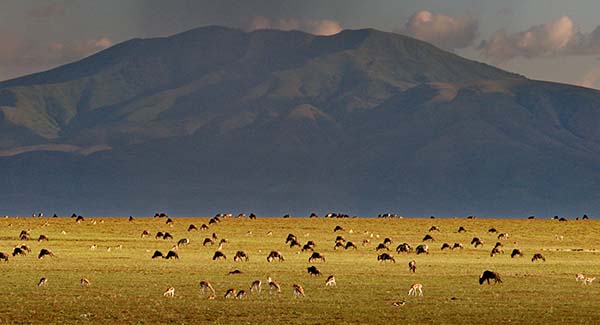 Episode 1: The Animal Kingdom
Episode 1: The Animal Kingdom
Episode 2: Soda Lakes and Inland Seas
Episode 3: From Hell ot the Holy Land
Harald Pokieser’s three-part “Rift Valley – The Great Rift” was one of the most elaborate UNIVERSUM productions ever undertaken by Austria’s broadcaster ORF, and explored one of the most fascinating landscapes in the world. The 6000-kilometer rift stretches from the Jordan Valley to the Red Sea, then on to east Africa and Mozambique. It is a legendary region, home to the rich animal habitats of the Serengeti and the Masai Mara, the Kilimanjaro mountain, the Ngorongoro crater and Lake Tanganyika. The series was a co-production of ORF, NDR Naturfilm, WDR, ARTE, Cosmos Factory and National Geographic Channel U.S.A.
Episode 1 was awarded the Grand Prix of Germany’s international nature documentary film festival “NaturVision”. As the jury explained, “Exceptional aerial footage combines with fantastic animal sequences. Breathtaking sprints of African big cats on the hunt are presented as though one was part of it. It is something that people love to see, and one cannot get enough of this film.”
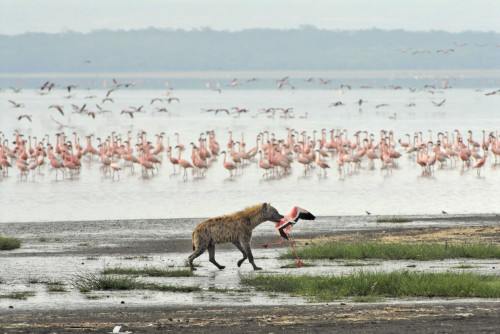 In addition, the first episode received the first prize in the nature documentary category at France’s renowned “Festival international du Film Ornithologique”, as well as the Golden Dolphin in the “Science & Knowledge” category of the “Corporate Media & TV Awards”.
In addition, the first episode received the first prize in the nature documentary category at France’s renowned “Festival international du Film Ornithologique”, as well as the Golden Dolphin in the “Science & Knowledge” category of the “Corporate Media & TV Awards”.
In Spain, the film was declared the best nature documentary at the International Science Film Biennial, and also received the audience award.
At the “CINE Film and Video Competitions” in Washington D.C., the film was awarded the Golden Eagle Award, and at the world’s largest nature film festival in Missoula (Montana, U.S.A.) “The Great Rift” received recognition in the categories of “Scientific Content and Research” and “Cinematography”.
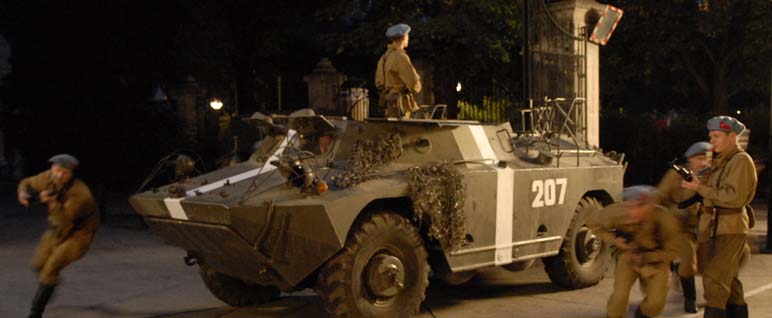
On the night of August 20, 1968, the rebellious state of Czechoslovakia is invaded by an army of the Warsaw Pact countries numbering 500,000 men. Forty years later, the ORF recalls the events of the fateful Prague Spring in a documentary drama directed by Manfred Christ and Michael Kreihsl. The film examines the dramatic events of the time using recent research, interviews and narrative sequences.
Michael Kreihsl directed the dramatic re-enactments, while Manfred Christ assumed responsible for the film as a whole and the voice-over. 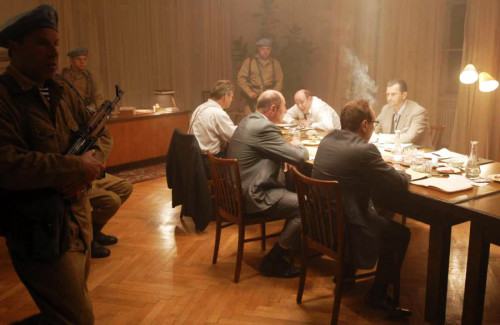 “Prague Spring” includes statements from witnesses and contemporaries including the Austrian television legends Gerd Bacher and Hugo Portisch, Helmut Zilk, the diplomat Klas Daublebsky, friends and colleagues of Alexander Dubcek, the interpreter Tamara Reimannova and the two Czech TV presenters Kamila Mouckova and Otka Bednarova.
“Prague Spring” includes statements from witnesses and contemporaries including the Austrian television legends Gerd Bacher and Hugo Portisch, Helmut Zilk, the diplomat Klas Daublebsky, friends and colleagues of Alexander Dubcek, the interpreter Tamara Reimannova and the two Czech TV presenters Kamila Mouckova and Otka Bednarova.
Alexander Dubček: Jan Hrušínský. Leonid Breschnew: Bogdan Stupka. Script: Harald Pokieser, Manfred Christ. Camera: Reinhold Vorschneider, Stephan Mussil. Edit: Adam Wallisch, Jörg Achatz. Music: Andy Baum.
A co-production of Cosmos Factory, ORF, ARTE, Austrian Federal Ministry of Education, in association with Vienna Film Fund, Austrian Television Fund and Lower Austria Film Fund.
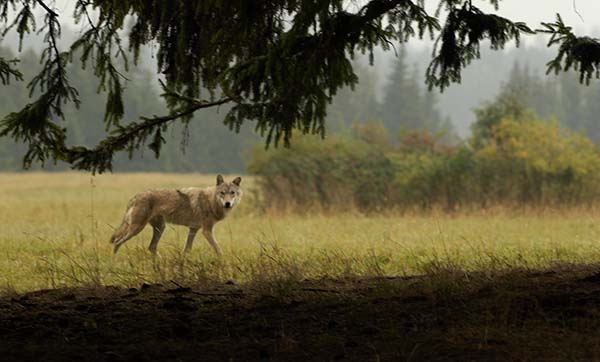
The Tatra mountain range forms a natural border between Slovakia and Poland, with some foothills in the Czech Republic. Exploring the natural world of the Tatras is a journey back in time to an age when ploughs were pulled by horses and trees were felled with axes and handsaws. It is one of the last European wildernesses that still allows sufficient space for large predators. The wild, romantic meadows and pastures seem like something out of a fairy tale – as do the stories told by the shepherds around the campfire. They speak of lonely, hot summers, of violent storms and blizzards, of lurking wolves and battles with brown bears.
Directed by Pavol Barabas, written by Pavol Barabas and Harald Pokieser. Camera: Tomáš Hulík. A Cosmos Factory/ARTpoint production for ORF in co-production with WDR and NDR Naturfilm in association with the Slovakian Ministry of Culture.
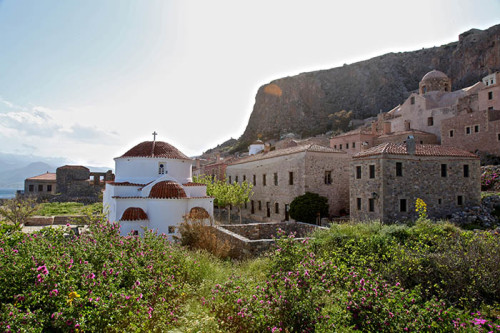 Unemployment, poverty, upheaval, bankruptcy – Greece’s image has hit rock bottom. The country is finished in the eyes of Europe. But what is life really like out there, in the olive groves, on the islands and in the tavernas?
Unemployment, poverty, upheaval, bankruptcy – Greece’s image has hit rock bottom. The country is finished in the eyes of Europe. But what is life really like out there, in the olive groves, on the islands and in the tavernas?
In April, the most beautiful time of the year, the filmmakers explore the mood among ‘the simple people’ during a several week long boat-trip from Crete to Western Greece. How are they experiencing the crisis? What do the reformations mean to them? What happened to ‘good old Greece’?
Fabian Eder finds out during his survey that surprisingly many people manage to put aside GNP, debt cut and economic crisis. One escapes to the tried and trusted: music, mediterranean lifestyle and the blessings of the greek cuisine. The tour through the Greek islands shows a country worth living in – it produces hope and contradicts the daily coverage of Greece’s situation. A Backyard/Cosmos Factory production (50 minutes)
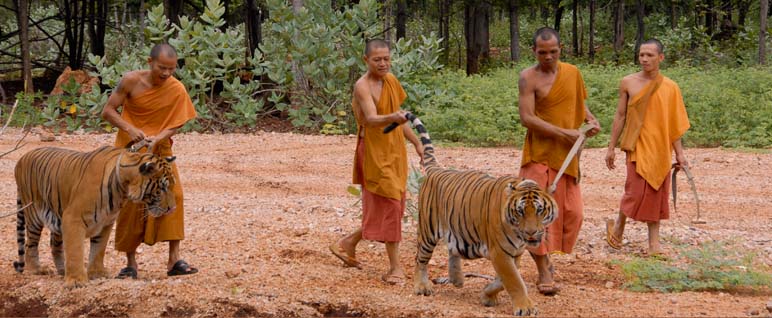 Wat Pa Luangta Bua is a monastery of meditation, situated far away from any civilization, about 200 kilometers west of Bangkok, and here, silence, peace and harmony reign. Every afternoon, a daily ritual is observed – nonchalant Buddhist monks take their ten 3-5 year old tigers out on a leash for a walk through the bordering region of Burma…
Wat Pa Luangta Bua is a monastery of meditation, situated far away from any civilization, about 200 kilometers west of Bangkok, and here, silence, peace and harmony reign. Every afternoon, a daily ritual is observed – nonchalant Buddhist monks take their ten 3-5 year old tigers out on a leash for a walk through the bordering region of Burma…
They dote upon their tigers, feed them and celebrate them as their most sacred animal. The monks treat grown-up animals with reverence and respect although they cuddle and play with the cubs.
The tigers were once the «aristocrats» of the jungle of South East Asia but today, this undisputed ruler of the animal kingdom is one of the most endangered species in the world. Three of the eight subspecies are already extinct, a fate that could also overcome the others. Only an estimated 500 to 2000 tigers of Indochina still inhabit the intact jungle regions of South China, Burma, Thailand, Cambodia, Malaysia and Vietnam. This documentary portrays the harmonious relationship between predators and humans without disregarding the monk’s maxim that «a tiger will always be a tiger, even if it feeds from the hand. It will always be a wild animal». Produced by Cosmos Factory for ORF in co-production with Thirteen/WNET New York, Canal+ and BR.
Awards: Missoula International Wildlife Film Festival 2007: Missoula International Wildlife Film Festival Award, NaturVision 2007: NaturVision Award, Green Wave – European Environment Festival 2007: Green Wave – European Environment Festival Award
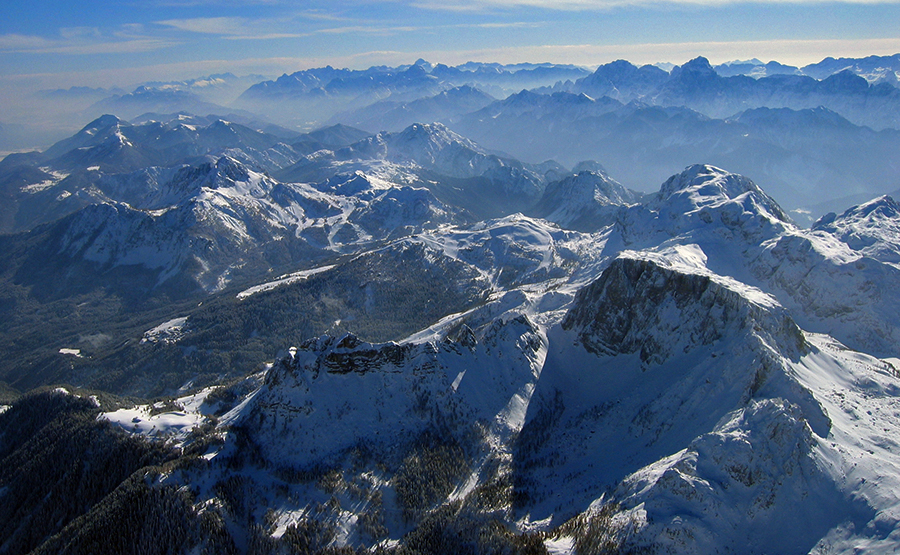 Austria’s southern region boasts a mountain range that seems to consist of nothing but borders: the Carnic Alps. This is where cultures, languages and lifestyles meet, where Mother Nature provides a glimpse of the history of our planet Earth and where a soft breeze from the sea hits the cold Alpine wall.
Austria’s southern region boasts a mountain range that seems to consist of nothing but borders: the Carnic Alps. This is where cultures, languages and lifestyles meet, where Mother Nature provides a glimpse of the history of our planet Earth and where a soft breeze from the sea hits the cold Alpine wall.
It is a place of close encounter of three languages: Slovenian, German and Italian. Apart from the geographical border position, it is the steep mountain cliffs, the narrow valleys and the diversity of these borders that have shaped people’s mentality. At a distance of approximately 60 miles from the sea, the impact on the weather is obvious. When the clouds come pushing to the North from the Adriatic Sea, they eventually hit the main ridge of the Carnic Alps, which forces them to stop for a rest and shed rain. Finally, the geological history of Mother Earth has formed its own boundaries here between the earth’s ages. A co-production by Cosmos Factory, ORF and Austrian Federal Ministry of Education in association with the Carinthian Tourist Board.
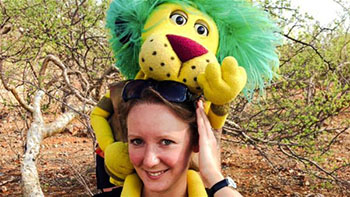 20 x 15 minutes of children’s TV for the SWR, produced by EIKON Südwest and Cosmos Factory and broadcast on KiKa.
20 x 15 minutes of children’s TV for the SWR, produced by EIKON Südwest and Cosmos Factory and broadcast on KiKa.
Oli, a green-haired lion, travels to Namibia to trace the movements of his ancestors. During his journey he encounters cheetahs, crocodiles, ostriches and many other animals. Broadcast on KiKa every Saturday from 13. September 2014 at 10.05 a.m. Directed by Tim Hübschle.
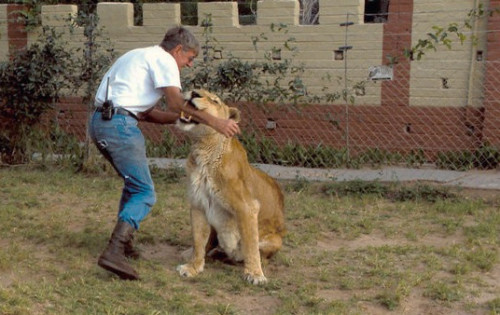 From the press release: “Season three sees the return of Tom the African wild dog, one of the difficult cases from season 2 who gained the affections of the volunteers, as well as the cheetah Atheno, who refuses to run no matter how much encouragement he is given. Among the new arrivals are Franzi, a female baboon, and three baby giraffes.”
From the press release: “Season three sees the return of Tom the African wild dog, one of the difficult cases from season 2 who gained the affections of the volunteers, as well as the cheetah Atheno, who refuses to run no matter how much encouragement he is given. Among the new arrivals are Franzi, a female baboon, and three baby giraffes.”
The colourful African docu-soap was directed by Max Stelzle, Tim Hübschle and Peter Rabinger. The first episode of forty 48-minute episodes was broadcast by ARD in February 2015. A co-production with SWR and EIKON Südwest in Stuttgart.
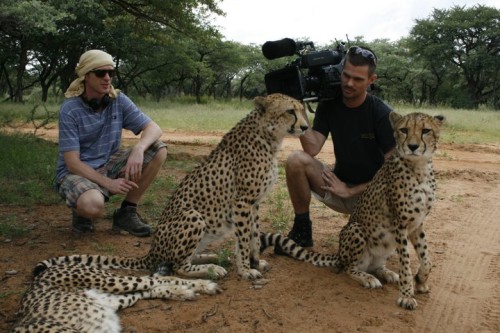 Our camera teams spent six months in Namibia filming on various farms. Harnas was familiar to viewers from the first season, while Okutala Etosha was established as a new, fascinating location. The farm near the Etosha National Park provided some exciting stories, including the delivery of rhinoceroses from South Africa by truck and the arrival of two orphaned elephants.
Our camera teams spent six months in Namibia filming on various farms. Harnas was familiar to viewers from the first season, while Okutala Etosha was established as a new, fascinating location. The farm near the Etosha National Park provided some exciting stories, including the delivery of rhinoceroses from South Africa by truck and the arrival of two orphaned elephants.
Season two (episodes 41-85, 48 minutes each) for Germany’s SWR broadcaster. In co-operation with EIKON Südwest, Stuttgart. First broadcast on the ARD in September 2013.
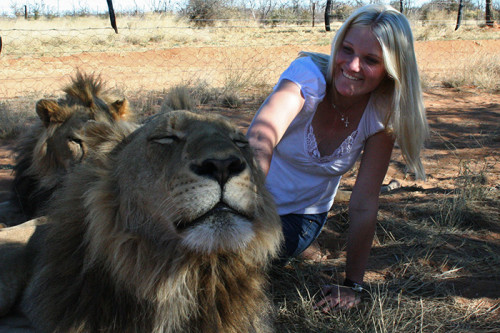 The series tells the stories of a farm in Namibia that takes in abandoned wild animals. Harnas is run by the van der Merwe family, supported by volunteers from all over the world who come here to see exotic animals and experience the African wilderness.
The series tells the stories of a farm in Namibia that takes in abandoned wild animals. Harnas is run by the van der Merwe family, supported by volunteers from all over the world who come here to see exotic animals and experience the African wilderness.
The Harnas Wildlife Foundation is a non-profit organisation financed by donations. The animals the foundation cares for are often injured or have been abused, and the farm either houses them permanently or prepares them gradually for a return to the wild.
Docusoap with 40 episodes of 48 minutes each for SWR/ARD. In cooperation with EIKON Südwest, Stuttgart.
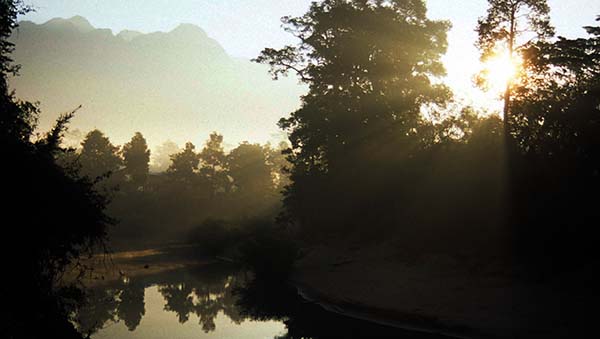 Southeast Asia at its best. 85% of the country is untouched nature, widespread forests, steep mountains and wide river valleys, but also cool high plateaus and savannahs. The primeval forests support a fauna like something out of a fairy tale, with elephants, tigers, leopards, and some of the rarest animal species on the planet. Species never seen by humans are discovered at regular intervals. In recent decades, the few large mammals to be described for the first time were all found in Indochina and experts assume that most of them are at home in Laos: wild oxen such as the saola and kuprey or the truong son muntjak. No outsider has ever seen a living specimen of the latter; its existence is only known indirectly, through skeletons, horns and bag that are occasionally found in remote villages.
Southeast Asia at its best. 85% of the country is untouched nature, widespread forests, steep mountains and wide river valleys, but also cool high plateaus and savannahs. The primeval forests support a fauna like something out of a fairy tale, with elephants, tigers, leopards, and some of the rarest animal species on the planet. Species never seen by humans are discovered at regular intervals. In recent decades, the few large mammals to be described for the first time were all found in Indochina and experts assume that most of them are at home in Laos: wild oxen such as the saola and kuprey or the truong son muntjak. No outsider has ever seen a living specimen of the latter; its existence is only known indirectly, through skeletons, horns and bag that are occasionally found in remote villages.
And there is the Mekong, one of the last untamed rivers on Earth. Fed by hundreds of tributaries, it is one of the richest freshwater systems on the planet, comparable only with the Congo or Amazon. This is where the Mekong catfish lives. At 3 meters long and weighing in at 300 kilograms, this monster must be the largest freshwater fish on earth. A co-production by Cosmos Factory, ORF, WDR/NDR and DDE.
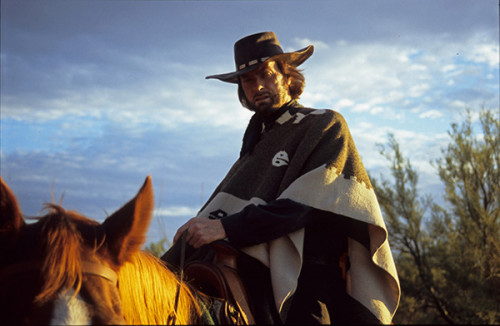 For more than a century, western films have awakened a yearning for wide-open country in audiences around the world. Many people are sure that they can immediately recognise the Wild West because of the movies, but it is an illusion: the nature on display in the westerns is far removed from reality.
For more than a century, western films have awakened a yearning for wide-open country in audiences around the world. Many people are sure that they can immediately recognise the Wild West because of the movies, but it is an illusion: the nature on display in the westerns is far removed from reality.
In movies, the river is sometimes just a day’s ride from the desert, when in reality the respective landscapes are thousands of miles apart. The water levels of the famed Rio Bravo have been so low for so long that the Colorado or San Juan rivers were traditionally used as stand-ins. If the landscape was too sparse, saguaro cacti were used to spice it up – whether they actually grow there or not. Almost every film is full of vultures, bison, mustangs and turkeys, but one rarely sees a pronghorn antelope: although they were one of the main sources of food for rangers and settlers at the time, the animals were airbrushed from movie history for financial reasons – probably because they were only ever seen from a distance and were therefore difficult to film.
The famous “Man with No Name”, the hero of innumerable westerns in the 1960s and 70s, rides through the countryside and this film, explaining the thought processes of the scriptwriters. The somewhat tongue-in-cheek hero is portrayed by Joe Dimmick, the world’s number one Clint Eastwood double for more than thirty years.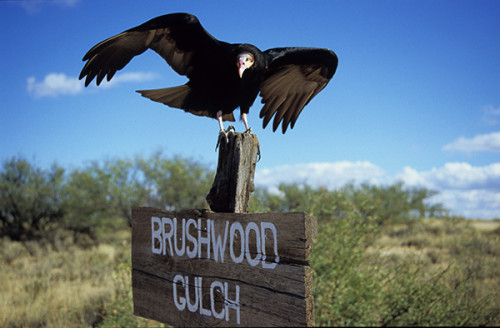
By the end of the film, Joe hopes that the audience is on his side: “Feel it? That urge to ride on and on, leave everything behind, follow the sun to where it goes down? Well, I tell you this: I reckon if you really want it you can still find the Old West anywhere!”
The original music was composed by Andy Baum, who also wrote a ballad that is performed by the American musician Lou Strebner. Written and directed by Manfred Christ and Harald Pokieser. A co-production of ORF, Discovery Channel USA and NDR Naturfilm, produced by Cosmos Factory.
The film received a Panda Award for Innovation at the British Wildscreen Festival in 2005, as well as other awards for “Best Camerawork” and “breaking boundaries” at festivals throughout Europe and Asia.
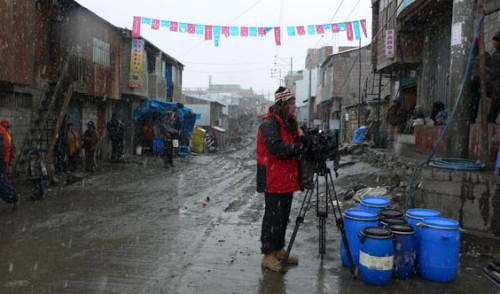 In the near future, some of the settlement areas will become uninhabitable, and new land will need to be tapped into because of climate change. Are there any limitations to realizing the impossible? The third part of filmmaker Udo Maurer’s voyage through the world’s extremes compares life at sea level with the highest mountains of the world. From the lagoons and palm beaches of the South Sea Islands whose highest peak is often only soem few meters high to the highlands of Ethiopia at four thousand metres. From the shores of Dead Sea, located at 408 meters below sea level, to the 5400 meter high La Rinconada, the gold minder city, in the Peruvian Andes. La Rinconada is not like any other place, it is the highest inhabited place on Earth. If someone dares to go that long stretch, it is only for one reason: to become rich. In fact, there is gold in La Rinconada – and that attracts adventurers from all over the world.
In the near future, some of the settlement areas will become uninhabitable, and new land will need to be tapped into because of climate change. Are there any limitations to realizing the impossible? The third part of filmmaker Udo Maurer’s voyage through the world’s extremes compares life at sea level with the highest mountains of the world. From the lagoons and palm beaches of the South Sea Islands whose highest peak is often only soem few meters high to the highlands of Ethiopia at four thousand metres. From the shores of Dead Sea, located at 408 meters below sea level, to the 5400 meter high La Rinconada, the gold minder city, in the Peruvian Andes. La Rinconada is not like any other place, it is the highest inhabited place on Earth. If someone dares to go that long stretch, it is only for one reason: to become rich. In fact, there is gold in La Rinconada – and that attracts adventurers from all over the world.
Directed by Udo Maurer, written by Manfred Christ. A co-production of ORF, FreMantle Media and Cosmos Factory.
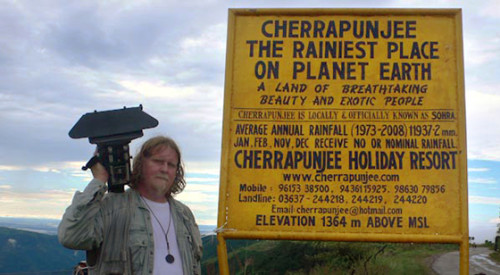 In the 21st century, the average rainfall will increase and likewise its intensity. Many party of Earth will therefore drown in rain and snow, whilst other parts will dry out. What should we expect? How should we deal with these new conditions? How to adapt to it?
In the 21st century, the average rainfall will increase and likewise its intensity. Many party of Earth will therefore drown in rain and snow, whilst other parts will dry out. What should we expect? How should we deal with these new conditions? How to adapt to it?
One answer can be found there where humankind has already gotten used to exceptionally high rainfalls, there where there is never a drop of rainfall, and there where rain and snowfall reach world records. The French Island, La Réunion, in the Indian Ocean offers almost certainly a guarantee for torrential rainfall. When it comes to world records, La Réunion is by far the champion. The big legend amidst the places with the most rain is the city Cherrapunjee in Eastern India. Cherrapunjee is proud to call itself the wettest place on Earth. Here one has to get acclimated to five months of continous rainfall. According to the most recent measurements, the amount of downpour is even increasing. On the other extreme there is the Atacama desert in Chile. It is considered the driest desert on Earth. Allegedly, some places have not even seen rainfall for four thousand years.
Directed by Udo Maurer, written by Manfred Christ. A co-production of ORF, FreMantle Media and Cosmos Factory.
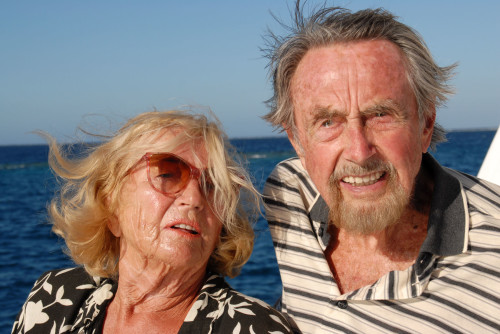 For hundreds of thousands of divers and underwater specialists throughout the world the name Hans Hass is synonymous with everything that takes places under the ocean waves. Hans Hass is the godfather of underwater cinematography and with his photos and films he showed the wonders of the sea to the people above – long before Jacques-Yves Cousteau.
For hundreds of thousands of divers and underwater specialists throughout the world the name Hans Hass is synonymous with everything that takes places under the ocean waves. Hans Hass is the godfather of underwater cinematography and with his photos and films he showed the wonders of the sea to the people above – long before Jacques-Yves Cousteau.
The Viennese zoologist celebrated his 90th birthday on 23. January 2009. Hass was always curious and invariably did the things that others couldn’t or wouldn’t do, as he says himself. In 2007, aged 88, he travelled to the Red Sea with his wife Lotte and a group of friends for a last diving expedition, despite his advanced age. He returned to the spot where he became the first person to enter the sea with a diving mask in the late 1940s. Erich Pröll captured Hass’ final return to the sea with the camera, and Manfred Christ directed the 50 minutes film.
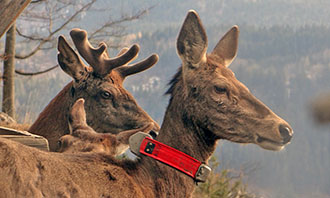 A film about strategies for the intelligent and efficient hunting of red deer in the Alps, commissioned by the Austrian Federal Forests. The aim is to fulfil the hunting quotas mandated by the authorities while causing as little disruption to the habitat as possible. Recent research projects involving GPS transmitters have revealed that red deer use the space available to them remarkably intelligently in the course of a year. These discoveries provide the foundations for new approaches in hunting.
A film about strategies for the intelligent and efficient hunting of red deer in the Alps, commissioned by the Austrian Federal Forests. The aim is to fulfil the hunting quotas mandated by the authorities while causing as little disruption to the habitat as possible. Recent research projects involving GPS transmitters have revealed that red deer use the space available to them remarkably intelligently in the course of a year. These discoveries provide the foundations for new approaches in hunting.
The film is aimed at open-minded hunters and at people interested in the complex relationships between the forests, wild animals and humans. Concept: Friedrich Völk, director: Manfred Christ, camera: Klaus Achter, sound: Hermann Winklhofer, editor: Alex Schönauer. Completed in November 2015. Distribution: Austrian Federal Forests
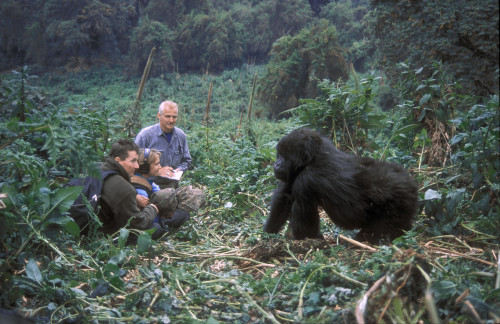 In 1902, German army Captain von Beringe had been the leader of an official expedition to the Virunga Volcanoes in today‘s Rwanda. He became the first European to encounter and describe mountain gorillas. He shot a mysterious black creature while climbing an unexplored volcano in Central Africa. From this chance encounter, a dramatic story began to unfold. The creature was a new species, a mountain gorilla. Decades of conflict and tragedy followed before the terrifying icon of King Kong was shown to be a myth by researchers such as George Schaller and Dian Fossey.
In 1902, German army Captain von Beringe had been the leader of an official expedition to the Virunga Volcanoes in today‘s Rwanda. He became the first European to encounter and describe mountain gorillas. He shot a mysterious black creature while climbing an unexplored volcano in Central Africa. From this chance encounter, a dramatic story began to unfold. The creature was a new species, a mountain gorilla. Decades of conflict and tragedy followed before the terrifying icon of King Kong was shown to be a myth by researchers such as George Schaller and Dian Fossey.
A hundred years after the discovery, Robert‘s Grandson, Andreas von Beringe, a Viennese doctor, sets out on a journey to retrace his Grandfather‘s adventures and to reveal the whole story of the mountain gorilla. We will take grandson Andreas on a trip to retrace the route of that expedition and relive, his grandfather‘s diary in hand, that memorable encounter with the hindsight of one hundred years of dramatic human-gorilla relations. Directed by Adrian Warren and Harald Pokieser. Produced by Cosmos Factory for ORF in co-production with DDE, WDR and NDR Naturfilm. German premiere May 18, 2004 (ORF)
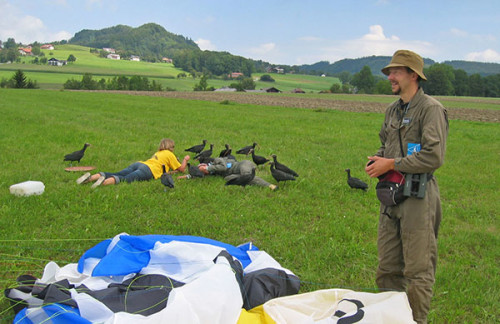 In 2003 a group of zoologists ventured out to indulge into a truly crazy adventure. Their ambition: to show a fl ock of bald ibises, birds that have been pushed over the brink by hunting and habitat destruction and only survived in zoos, how to fl y to their winter quarters on their original
In 2003 a group of zoologists ventured out to indulge into a truly crazy adventure. Their ambition: to show a fl ock of bald ibises, birds that have been pushed over the brink by hunting and habitat destruction and only survived in zoos, how to fl y to their winter quarters on their original
seasonal migration routes. They accompanied the animals with lightweight airplanes from Austria to Italy – a chaotic event full of mishaps and some successes. But now it appears as though their dreams are about to come true: the comeback of a bird that went extinct in Europe in the Middle Ages.
In the previous year two bald ibises managed to fly back to Austria without guidance. Now, for the fifth time, human foster parents – 16 people from 4 nations – will once again lead the way for young ibises in completely novel paraplanes covering a distance of 900 kilometres within three weeks. This documentary takes us on a thrilling and humorous adventure introducing us to a very special family consisting of birds and humans. Produced by Cosmos Factory for ORF in association with BR and Austrian Federal Ministry of Education.
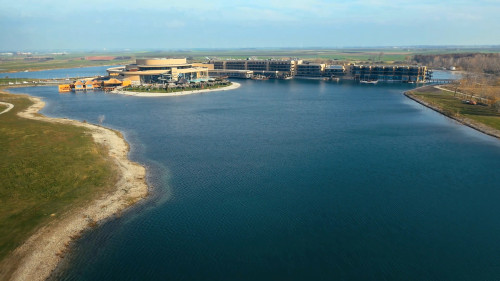 The St. Martins Thermal Baths and Lodge on Austria’s border to Hungary celebrated its fifth anniversary in November 2014 with new suites, a new spa, a new lake-view sauna and a gala evening.
The St. Martins Thermal Baths and Lodge on Austria’s border to Hungary celebrated its fifth anniversary in November 2014 with new suites, a new spa, a new lake-view sauna and a gala evening.
Manfred Christ directed the trailers produced to mark the new era in association with the bluetango agency. In addition, the exceptionally well-prepared house goose Martina took the viewers on a stroll through the new facilities.
Camera: Klaus Achter, multicopter: Thomas Kirschner, edited by Jörg Achatz. Commissioned by VAMED Vitality World. The clip “The Return of the White-tailed Eagle” was awarded an Excellence Award at the international Tourism Multimedia Awards in Berlin in March 2015.
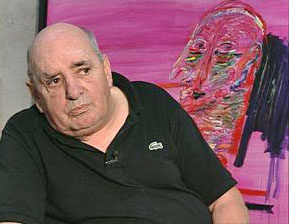 Loaded with sexuality, violence and pain, disfigured and illuminated by an explosion of colour, his figurative works and portraits were considered by many to be offensive and obscene. Although collectors of the time were forced to hide his paintings away in attics, today Franz Ringel is recognised as one of the giants of contemporary painting. Galleries, private collectors and museums are all eager to snap up his work. This documentary tries to find the person behind the pictures. What does Ringel love and what does he hate; what is and isn’t to his taste? A conversation, a monologue, a collection of thoughts about sexuality, alcohol, colour, pain, love, travel and coming home. Written and directed by Thaddäus Podgorski.
Loaded with sexuality, violence and pain, disfigured and illuminated by an explosion of colour, his figurative works and portraits were considered by many to be offensive and obscene. Although collectors of the time were forced to hide his paintings away in attics, today Franz Ringel is recognised as one of the giants of contemporary painting. Galleries, private collectors and museums are all eager to snap up his work. This documentary tries to find the person behind the pictures. What does Ringel love and what does he hate; what is and isn’t to his taste? A conversation, a monologue, a collection of thoughts about sexuality, alcohol, colour, pain, love, travel and coming home. Written and directed by Thaddäus Podgorski.
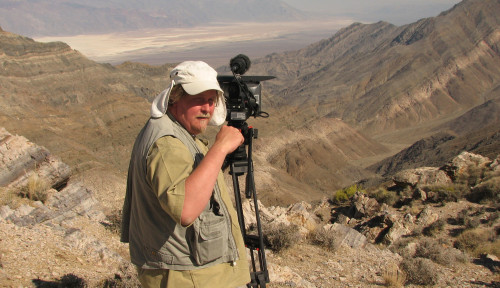
This is a journey to the hottest and coldest places on earth, where people go about their everyday lives under extreme conditions – and even enjoy it.
The Northern Pole of Cold, where the northern hemisphere’s lowest air temperature of minus 71.2 degrees Celsius has been recorded, lies in north-east Siberia. Thousands of miles away lies America’s answer to the record-holding Russian village: Furnace Creek, headquarters of Death Valley National Park. Another infamous blast furnace is the Danakil Depression in the borderland between Eritrea and Ethiopia – one of the most forbidding deserts on earth, a volcanic wasteland almost 150 meters below sea level, which boasts the highest measured annual average temperature: 34.6 degrees Celsius. Directed by Udo Mauer, written by Manfred Christ and Udo Maurer. A co-production of Cosmos Factory for ORF in association with Fremantle Media.
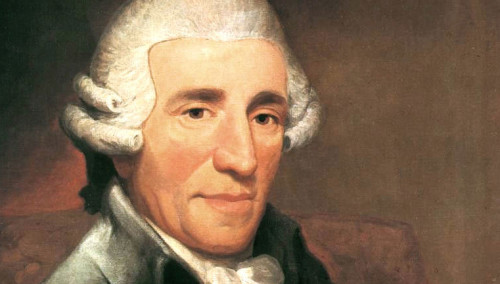 The film explores the regions and landscapes of Austria’s Burgenland province that played an important role in the composer’s life, capturing the positivity and light-heartedness that characterises both the countryside and the celebrated composer’s work.
The film explores the regions and landscapes of Austria’s Burgenland province that played an important role in the composer’s life, capturing the positivity and light-heartedness that characterises both the countryside and the celebrated composer’s work.
Writer and Director: Anita Natmeßnig, Editor: Adam Wallisch. 25 minutes, commissioned by ORF.
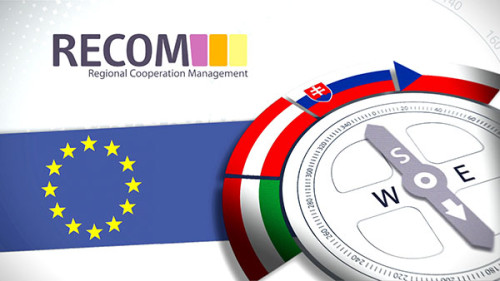 What do the current robotics world champion, an innovative organic winemaker and Europe’s leading poultry experts have in common? They have all crossed borders – literally: they work with Czech, Slovak, Hungarian and Austrian partners as part of a project funded by the European Union.
What do the current robotics world champion, an innovative organic winemaker and Europe’s leading poultry experts have in common? They have all crossed borders – literally: they work with Czech, Slovak, Hungarian and Austrian partners as part of a project funded by the European Union.
Language barriers, cultural concerns and administrative hurdles are often barriers to working with neighbouring countries within an EU project framework. The 16-minute film (in three languages: German, Hungarian, Slovak) goes behind the scenes: Who are the people organising the project? What experiences have they had with their foreign partners? What are the benefits of crossing borders? Director: Manfred Christ, camera operator: Franz Schrems. Graphics and editing: Jörg Achatz. Commissioned by Vienna’s municipal Department for EU Strategy and Economic Development.
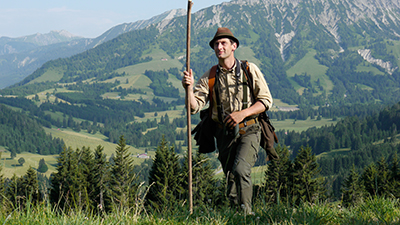 Stefan Pfefferle is a professional hunter from Germany’s Allgäu region, responsible for overseeing an unusual territory: despite active hunting, visitors are able to observe the wild animals in their natural environment.
Stefan Pfefferle is a professional hunter from Germany’s Allgäu region, responsible for overseeing an unusual territory: despite active hunting, visitors are able to observe the wild animals in their natural environment.
In a 14-minute film for the hunting clients of the Austrian Federal Forests, Pfefferle explains how he has made this possible while still maintaining his mandated hunting quota. He has also produced a document explaining his methodology as part of a scientific thesis for the Vienna University of Natural Resources and Life Sciences. Camera: Bernhard Wallentin, editor: Jörg Achatz, director: Manfred Christ, wildlife footage: Stefan Pfefferle.
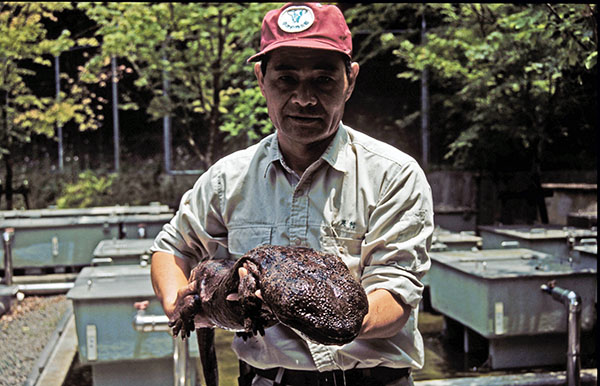
The film reveals all the miracles and curiosities in the salamander world that, until now, were only known to a few experts in the field. In technical terms, the film team went to some lengths: Thermal image cameras show that salamanders are as cold as the night they inhabit, night vision cameras allow the viewer to watch them in the dark, magnetic resonance tomography and x-ray images show us the inside of their bodies.
Written and directed by Manfred Christ. Camera: Bernhard Wallentin, Sound: Rene Schuh. Produced by Cosmos Factory for ORF in association with Docstar
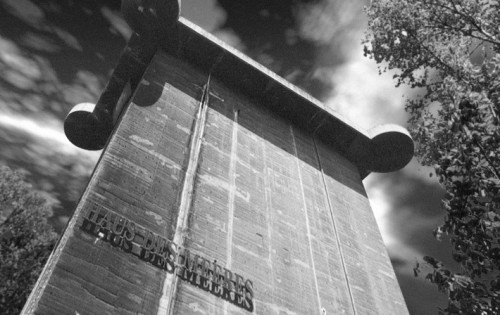 The mighty anti-aircraft bunker in Vienna’s 6th district, which is now home to the Aqua-Terra-Zoo “Haus des Meeres”, once played a significant role during World War II. As part of the permanent exhibition “Erinnern im Innern”, a 40-second clip reveals the true horror of the bombing of Vienna during the war. As the curator explains, the purpose of the exhibition is clear: “The direct confrontation with relicts of the Second World War should remind people how easily a regime of terror can destroy peace and tolerance.” Film directed by Manfred Christ.
The mighty anti-aircraft bunker in Vienna’s 6th district, which is now home to the Aqua-Terra-Zoo “Haus des Meeres”, once played a significant role during World War II. As part of the permanent exhibition “Erinnern im Innern”, a 40-second clip reveals the true horror of the bombing of Vienna during the war. As the curator explains, the purpose of the exhibition is clear: “The direct confrontation with relicts of the Second World War should remind people how easily a regime of terror can destroy peace and tolerance.” Film directed by Manfred Christ.
 When will the next large solar storm impact the earth? In this documentary produced for Terra Mater Factual Studios, director Manfred Christ gets up close and personal with the only star in our immediate vicinity. He examines the largest solar storm in history, which shook the earth in 1859, and presents both the earliest days of solar research and today’s high-tech approaches.
When will the next large solar storm impact the earth? In this documentary produced for Terra Mater Factual Studios, director Manfred Christ gets up close and personal with the only star in our immediate vicinity. He examines the largest solar storm in history, which shook the earth in 1859, and presents both the earliest days of solar research and today’s high-tech approaches.










































